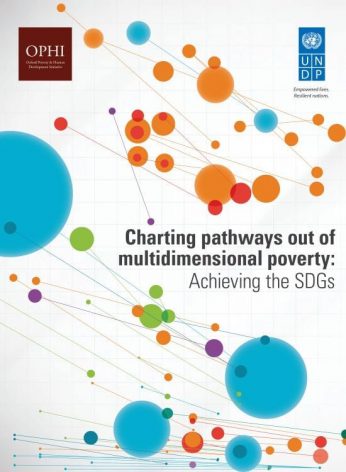NEW YORK / OXFORD, UK, Sep 18 (IPS) – Political polarization, the climate emergency, organized crime, migration, and low economic growth currently dominate the public debate in Latin America and the Caribbean (LAC), and rightly so. However, there is a significant structural challenge to human development and democracy itself that, along with inequalities, lies at the root of these crises: poverty.
Today, 181 million people, 29% of the region’s population, live in monetary poverty, and 33 million suffer from acute multidimensional poverty (considering only countries with available data). Advancing towards a prosperous and resilient LAC requires putting poverty in all its forms and dimensions back at the center of public debate and addressing new responses through public policy.
In past decades, the region significantly reduced poverty by taking advantage of economic growth driven by the commodities boom and the introduction of innovative public policies focused on solving this problem, such as conditional cash transfers—schemes where cash is given to households in poverty in exchange for specific investments in human development, such as ensuring school attendance or participation in vaccination campaigns-.
However, this trend began to reverse two years before the pandemic.
Revitalizing the poverty reduction agenda requires resuming this innovative capacity and political will. We have done it in the past, we must do it again, and it is possible. Brazil’s recent proposal to the G20 to promote a Global Alliance Against Hunger and Poverty is an excellent step in this direction.
To achieve this, it will be essential to better understand and measure the multiple forms and dimensions of poverty, ensure effective inter-institutional coordination for policy design and implementation, and refine the targeting and allocation of resources through new planning instruments. Given the context of low economic growth and limited fiscal space, efficiency is key to accelerating significant achievements.
Ensuring that people in poverty have the capabilities and opportunities to live the life they want requires tools that capture their realities and experiences, including the multiple deprivations that affect them in different dimensions of well-being and go beyond the lack of income.
Not having access to education, water, or health, among others, are significant deprivations that may or may not be correlated with having money—a person may have sufficient income to not be considered poor and yet not have access to healthcare because there is no hospital near his or her community.
The Global Multidimensional Poverty Index (MPI), launched by UNDP and OPHI in 2010, complements the measurement and analysis of extreme monetary poverty with information about people’s situation in multiple socioeconomic dimensions.
The MPI has been adopted by countries around the world as an official poverty measure, complementing income-based measures and focusing on each country’s priorities, turning them into effective public policy tools that allow for more precise identification of who and where the poor are, and how it varies by age, gender, territory, and ethnicity.
Latin America has been a pioneer in adopting national MPIs, with 12 countries and two major cities—Mexico City and Bogotá—and can once again be a reference for poverty reduction. The success of conditional cash transfers in the past meant a quantitative leap in the utility of monetary poverty data.
It is time to replicate this success by developing new transformative policies that have the same effect on the utility of multidimensional data, taking advantage of the planning, policy articulation, and monitoring possibilities provided by the rich information obtained from complementary use of both measures.
In Honduras, for example, multidimensional data was used to better identify the population with the greatest vulnerabilities as a result of COVID-19 and to more accurately guide cash supports.
On the other hand, a clear articulation between other national policies and poverty reduction goals will also be crucial to achieving greater impact. Policies like those related to productivity, energy, or climate change are often defined in a sectoral manner despite their potential to accelerate poverty reduction.
These links need to be formalized. It is also important to invite actors beyond the public sector to incorporate these analyses and actions to accelerate poverty reduction as part of their development strategies. For example, the Colombian natural gas producers’ association (Naturgas) created an index of strategic municipalities.
This explicitly incorporates an equity dimension through poverty-related variables alongside business variables usually used by private companies in their decision-making processes. This index generates incentives to invest in areas of greater poverty while respecting the natural profit-seeking of these companies.
If we want to get back on track towards eradicating poverty in all its dimensions, we must put poverty and inequality back on the public agenda, promoting spaces for dialogue, collaboration, and consensus around innovative and transformative public policies that allow us to move towards more equal and inclusive societies.
Only in this way we will be on track to achieve sustainable development in LAC. Let’s not wait any longer and make the leap that we need in public innovation for a well-being and human development that leave no one behind.
Michelle Muschett is Director, Regional Bureau for Latin America and the Caribbean of the United Nations Development Programme (UNDP); Sabina Alkire is Director of the Oxford Poverty and Human Development Initiative (OPHI) at the University of Oxford.
IPS UN Bureau
Follow @IPSNewsUNBureau
Follow IPS News UN Bureau on Instagram
© Inter Press Service (2024) — All Rights ReservedOriginal source: Inter Press Service




